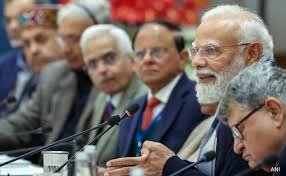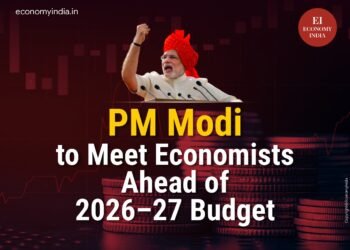It has been reported that The Omicron wave could be a flash flood, rather than a wave, and the Indian economy could recover its march towards a pre-pandemic level, according to the State of the Economy report of the Reserve Bank of India (RBI) released on Monday.
The infection surge due to Omicron has dented recovery temporarily.
“The recovery that has been underway in the Indian economy with the ebbing of the second wave of the pandemic is encountering headwinds from a rapid surge in infections in a third wave marked by the rapid transmissibility of the Omicron variant,” the report said.
Mobility indicators have dropped below the baseline numbers as daily infections surged to over 271,000 on January 13, the highest since mid-May 2021, with active caseload hitting 1.55 million.
However, aggregate demand conditions stayed resilient. The issuance of E-way bills surged to 72 million in December, the second highest in its history, indicating “the likelihood of robust collection of the goods and services tax (GST) in January 2022”, the report said.
Economic Activity
“With a strong pick-up in manufacturing and construction, highway toll collections soared by 16 per cent month-on-month (MoM) in December. Power consumption rose by 4.5 per cent to 110.3 billion units in December,” the report said.
The report, part of RBI’s January bulletin, said, the “overall economic activity in India remains strong, with upbeat consumer and business confidence and upticks in several incoming high frequency indicators.”
Centre for Monitoring Indian Economy (CMIE) data suggested labour participation rate turned up to 40.9 per cent in December, the highest since September 2020. The employment rate also improved by 23 basis points, though the unemployment rate worsened to 7.9 per cent in December from 7.0 per cent a month ago.
The CMIE data indicated that jobs were lost in manufacturing, hotels, tourism, and education, while jobs were created in construction, agriculture and retail trade. Overall, the total number of employed workers surpassed the pre-pandemic level for the first time in 2021 in December.
Export growth was also broad based, and 10 major commodity groups recorded an expansion above their pre-COVID levels.
The inflation, meanwhile rose due to unfavorable base effects between November and December, the RBI observed.
Global Outlook
“Monetary and credit conditions are improving with bank credit picking up in a gradual but sustained manner. India’s digital payment ecosystem is also expanding rapidly,” the report said.
However, the report noted that the global outlook “remains clouded by considerable uncertainty,” as inflation continues to mount across geographies amidst disruptions in production, supply chains and transportation.
“There are indications that supply chain disruptions and shipping costs are slowly easing, although the waning of inflation may take longer. This provides a window of opportunity to focus all energies on accelerating and broadening the global recovery,” the report said. (Business Standard)















